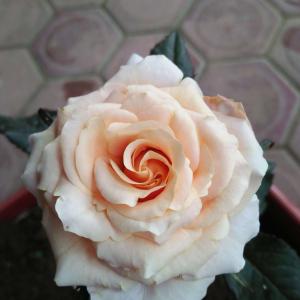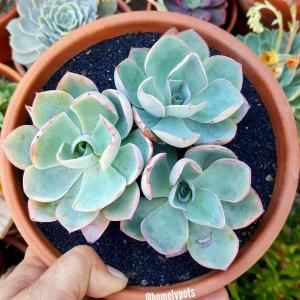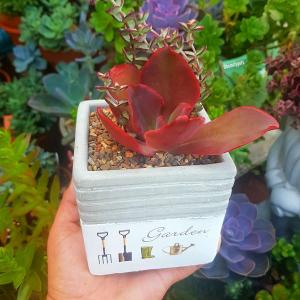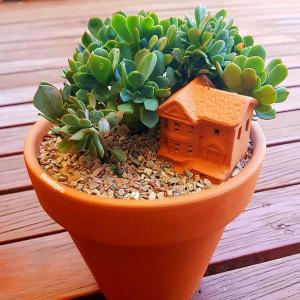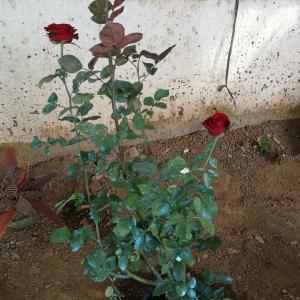成长记
kensong
2018年05月11日

Pruned my desert rose before leaving for a 2 week vacation and came back to this.




1
0
成长记
Toni Thor
2018年05月01日

I now added "Kristen Mix (snap dragons, aster, moss rose & yellow bombs)" in my "garden"


0
0
成长记
Michelle Sare
2018年04月06日

I now added "Mammillaria Zielmanniana ' Rose pincushion cactus '" in my "garden"


0
0
文章
Miss Chen
2018年04月02日

Description: This is a woody vine that is 4-12' long. In open areas, the Climbing Wild Rose ascends about 3' and arches downward to reroot in the ground, while in more wooded areas it tends to climb over neighboring vegetation. The prickles along the woody stems are short, stout, and slightly curved. They are not particularly numerous. The alternate compound leaves usually consist of 3 leaflets, or less often 5 leaflets. Each leaflet is about 2-3" long and 1-1½" across, with a rather long and pointed tip. The shape is ovate to slightly lanceolate, with deep conspicuous veins, and finely serrate margins. At the base of each compound leaf are two winged stipules without comb-like hairs.

The flowers appear in small clusters from early to mid-summer and bloom for about a month. Each flower is about 2½-3" across, and consists of 5 light pink to rosy pink petals, numerous golden stamens, and pistils that form a small column in the center. The flowers have a typical rose fragrance. Later in the summer, bright red rose hips appear. The root system consists of a taproot that branches occasionally, and is usually quite deep. This vine reproduces by seed or suckering of the stems.
Cultivation: The preference is full or partial sun and loamy, fertile soil. This plant prefers soil that is evenly moist or mesic – it dislikes wet conditions with standing water or droughty conditions. During dry, hot weather there is a tendency for the leaves to become yellowish green and growth may be stunted.

Range & Habitat: The native Climbing Wild Rose occurs throughout most of Illinois, except in the NW, where it is uncommon or absent (see Distribution Map). Habitats include moist to mesic prairies, savannas, thickets, woodland borders and clearings, acid gravel seeps, fence rows, abandoned pastures, and waste areas. Sometimes this plant is called the 'Prairie Rose,' although it is more common near woodland areas. It has a moderate capacity to recover from occasional fire and other disturbances.
Faunal Associations: The most common visitors to the flowers are various bees and Syrphid flies. Bees collect pollen, and typical visitors include honeybees, bumblebees, Anthophorine bees, Miner bees, large Leaf-Cutting bees, and Halictine bees. Syrphid flies feed on pollen, and are not effective pollinators. Various beetles and moth caterpillars feed on the foliage and flowers (see Moth Table for the latter). In some areas, Japanese Beetles can be troublesome. The rose hips are eaten by various small mammals and birds, including the Greater Prairie Chicken, while the stems and foliage are browsed by the Cottontail Rabbit and White-Tailed Deer (particularly the latter), notwithstanding the occasional prickles.
Photographic Location: The photographs were taken at a powerline clearance of Busey Woods in Urbana, Illinois.
Comments: This native rose can be distinguished from the exotic Rosa multiflora (Multiflora Rose) by the lack of comb-like hairs on the stipules at the base of its compound leaves. It also differs from Multiflora Rose by having larger flowers that are more pink and by having fewer leaflets per compound leaf. Other native roses in Illinois are small shrubs that don't have the climbing habit of Rosa setigera (Wild Climbing Rose). They also have more leaflets per compound leaf than the latter species, and they have a flat button of pistils at the center of each flower, instead of a narrow column of pistils.

The flowers appear in small clusters from early to mid-summer and bloom for about a month. Each flower is about 2½-3" across, and consists of 5 light pink to rosy pink petals, numerous golden stamens, and pistils that form a small column in the center. The flowers have a typical rose fragrance. Later in the summer, bright red rose hips appear. The root system consists of a taproot that branches occasionally, and is usually quite deep. This vine reproduces by seed or suckering of the stems.
Cultivation: The preference is full or partial sun and loamy, fertile soil. This plant prefers soil that is evenly moist or mesic – it dislikes wet conditions with standing water or droughty conditions. During dry, hot weather there is a tendency for the leaves to become yellowish green and growth may be stunted.

Range & Habitat: The native Climbing Wild Rose occurs throughout most of Illinois, except in the NW, where it is uncommon or absent (see Distribution Map). Habitats include moist to mesic prairies, savannas, thickets, woodland borders and clearings, acid gravel seeps, fence rows, abandoned pastures, and waste areas. Sometimes this plant is called the 'Prairie Rose,' although it is more common near woodland areas. It has a moderate capacity to recover from occasional fire and other disturbances.
Faunal Associations: The most common visitors to the flowers are various bees and Syrphid flies. Bees collect pollen, and typical visitors include honeybees, bumblebees, Anthophorine bees, Miner bees, large Leaf-Cutting bees, and Halictine bees. Syrphid flies feed on pollen, and are not effective pollinators. Various beetles and moth caterpillars feed on the foliage and flowers (see Moth Table for the latter). In some areas, Japanese Beetles can be troublesome. The rose hips are eaten by various small mammals and birds, including the Greater Prairie Chicken, while the stems and foliage are browsed by the Cottontail Rabbit and White-Tailed Deer (particularly the latter), notwithstanding the occasional prickles.
Photographic Location: The photographs were taken at a powerline clearance of Busey Woods in Urbana, Illinois.
Comments: This native rose can be distinguished from the exotic Rosa multiflora (Multiflora Rose) by the lack of comb-like hairs on the stipules at the base of its compound leaves. It also differs from Multiflora Rose by having larger flowers that are more pink and by having fewer leaflets per compound leaf. Other native roses in Illinois are small shrubs that don't have the climbing habit of Rosa setigera (Wild Climbing Rose). They also have more leaflets per compound leaf than the latter species, and they have a flat button of pistils at the center of each flower, instead of a narrow column of pistils.
0
0






